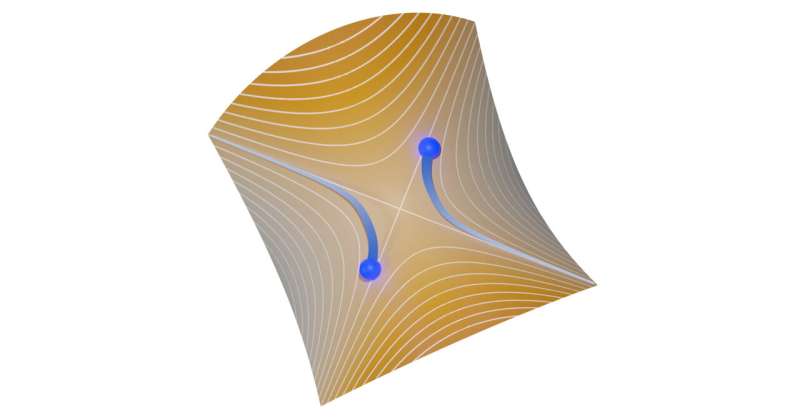This article has been reviewed according to Science X's editorial process and policies. Editors have highlighted the following attributes while ensuring the content's credibility:
fact-checked
peer-reviewed publication
trusted source
proofread
Electron collider on a chip verified by three independent research teams

Quantum electronics promises significant advances in ultra-sensitive measurements and quantum information processing. In nanoelectronic circuits, one electron can be used to precisely modify the trajectory of another electron through their mutual Coulomb interaction.
This new fundamental circuit element has now been demonstrated by three independent research teams, whose complementary discoveries have been published in the journal Nature Nanotechnology.
Electrical current is a stream of charged elementary particles. In semiconductor devices, ballistic electrons move at high speeds, making it difficult to address them individually. A controlled collision of individual electrons can provide the time resolution required for one electron to interrogate the other. The operating principle of such an electron collider circuit is similar to hitting one fast moving projectile with another well-timed shot. The challenge is therefore to precisely synchronize two individual electrons to exploit their interaction.
For this purpose, scientists at PTB have now developed a nanoscale collider on a semiconductor chip. Such a device integrates two single-electron sources that can be triggered to picosecond accuracy. Single-electron detectors record every outcome of the collision.
An electron pair is generated by two separated sources and placed on intersecting paths such that a collision can occur. If the sources are precisely synchronized, the interaction between the electrons of the pair will determine which final signaling path will be reached by which individual particle.
Despite the brevity of the encounter, the theoretical models developed at the University of Latvia with inputs from the Technical University of Braunschweig made it possible to infer electron trajectories from the experimental data and devise ways to control two-electron interaction for future applications.
This demonstration of time-resolved interaction not only shows that such a flying electron can be used as an ultrafast sensor or switch, it also proves a mechanism to generate quantum entanglement—a key component of quantum computing.
Appearing jointly with the consistent findings of research teams led by NEEL and NPL, these results have been published and introduced by a "News & Views" commentary by Fredrik Brange and Christian Flindt in Nature Nanotechnology.
More information: Niels Ubbelohde et al, Two electrons interacting at a mesoscopic beam splitter, Nature Nanotechnology (2023). DOI: 10.1038/s41565-023-01370-x
Junliang Wang et al, Coulomb-mediated antibunching of an electron pair surfing on sound, Nature Nanotechnology (2023). DOI: 10.1038/s41565-023-01368-5
J. D. Fletcher et al, Time-resolved Coulomb collision of single electrons, Nature Nanotechnology (2023). DOI: 10.1038/s41565-023-01369-4
Fredrik Brange et al, Interacting electrons collide at a beam splitter, Nature Nanotechnology (2023). DOI: 10.1038/s41565-023-01389-0
Journal information: Nature Nanotechnology
Provided by Physikalisch-Technische Bundesanstalt





















